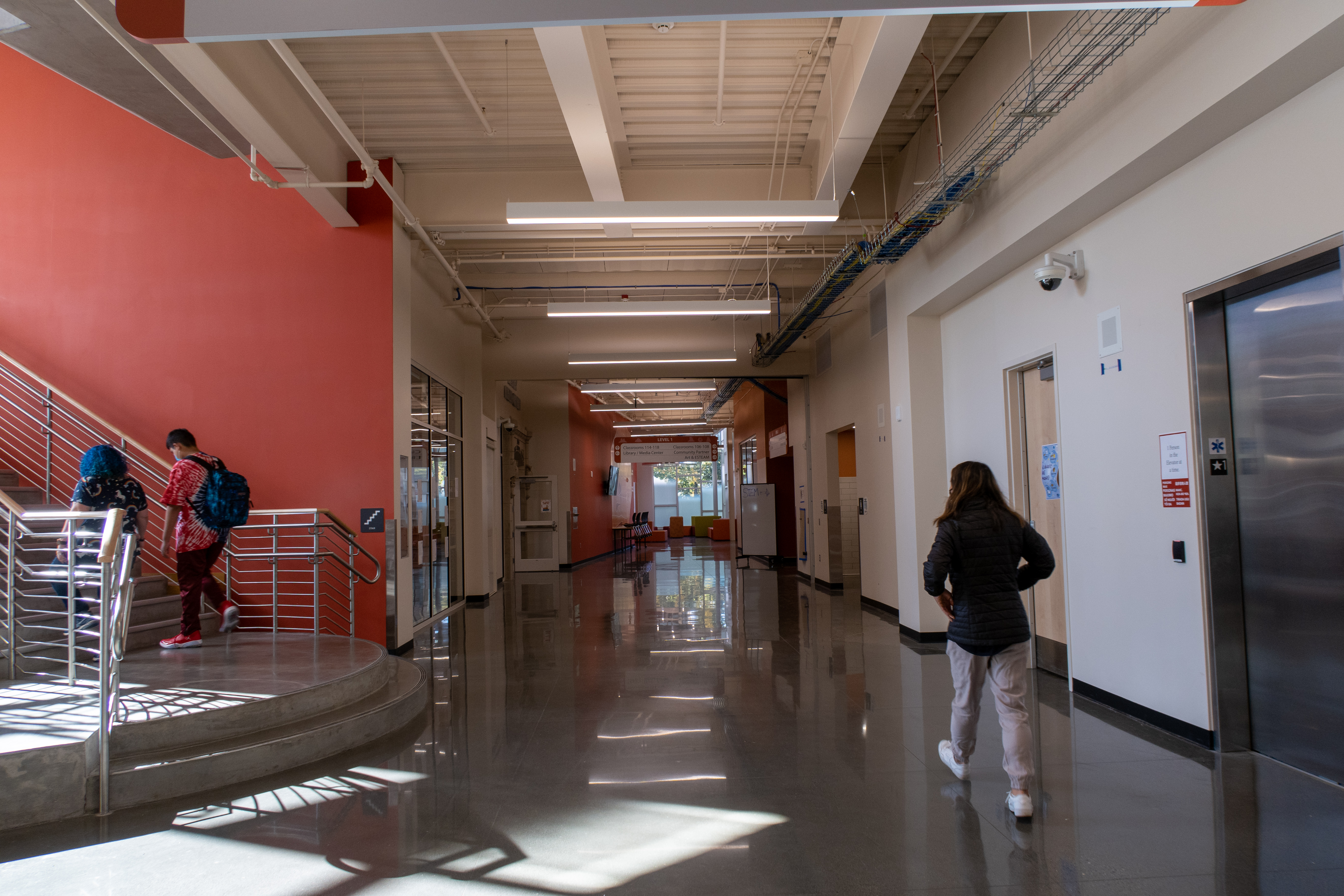
The halls at Kellogg Middle School in Southeast Portland are mostly empty after students go to first period in this photo, taken Sept. 1, 2021. Portland Public Schools added supports to help middle-grade students ahead of the 2022-23 school year.
Elizabeth Miller / OPB
Last spring, Portland middle school teachers asked the school board for more support in their schools. As students head back to school this week, help is on the way in the form of professional development, increased communication and new staff.
Teachers have been back in their classrooms for more than a week, preparing for students to return this Tuesday and Wednesday.
“Staff are cautiously excited,” said Portland Association of Teachers president Angela Bonilla.
Last year was tough on Portland middle schoolers and their teachers. It was the first year back to school after mostly distance learning. Students were thrown into new schools with increased responsibility, but without adequate support. Teachers struggled with burnout and the continuing impacts of the pandemic, all while schools dealt with staffing shortages that left students at some schools learning very little.
So this year, sixth graders start school one day earlier than their middle school peers. Ninth graders and seniors will also start the same day.
Bonilla said it’s a chance to get acquainted with a new school – from learning how to open a locker to finding the bathroom. It’s also about meeting school staff, and finding at least one adult they can trust.
“We know our kids are really anxious right now, especially post-COVID, so I’m really hoping it gives them a peace of mind before they enter the middle and high school grades with everyone else,” Bonilla said.
Last year, students and parents said bullying and fights were “out of control” at schools including Roseway Heights Middle School, in Northeast Portland. Some students roamed the hallways during class while others walked out in protest of a teacher placed on leave.
Related: In Portland middle schools, students are missing out on learning as teachers call for more support
In part to prevent a repeat of these problems, Portland middle schools are adding restorative justice coordinators based at several schools. Those are staff members who are tasked with helping students and staff resolve conflicts in ways that do not always lead to punishment. In the past, PPS had several coordinators on staff, but they struggled to meet the demand for requests in some schools and didn’t have buy-in from administrators in others.
Bonilla hopes a school-based coordinator allows more opportunities for on-going staff training.
“We’re finally getting some highly trained staff in our buildings, as opposed to waiting for someone to come from the district to help build community and repair any harm that might happen within our middle school communities that often tend to blow up,” Bonilla said.
Eight middle schools and four K-8 schools are set to receive the new staff: Astor, Cesar Chavez, Faubion, Harrison Park, Beaumont, George, Harriet Tubman, Kellogg, Lane, Mt. Tabor, Ockley Green, and Roseway Heights.
All but two schools have those staff members in place. A spokesperson for the district said in an email to OPB that officials are in the “process of interviewing and selecting a candidate” at Harrison Park and Faubion.
Portland administrators are also planning stronger engagement with middle schools families this year and two efforts to improve communication among everyone working in schools. One of those efforts involves community based organizations. Bonilla said sometimes students may find quicker connection with a community member, but they still need to be in class.
“Sometimes that tension of how do we best support the student’s instruction, and how do we ensure the student feels safe, and belonging and seen, was difficult to coordinate because there wasn’t a lot of time for community based organizations to meet with the educators,” Bonilla said.
And next month, Bonilla said school administrators and PAT members will participate in a joint training on the union’s contract, as a way to make sure students are supported but also held accountable for their behavior.
“We’re going to have an opportunity for our reps to come together with their administrators to collaborate around problem solving,” Bonilla said.
“So, not just saying that PAT knows the solution, or PPS knows the solution, but together, we can find something that can stick and that serves all of our students.”


